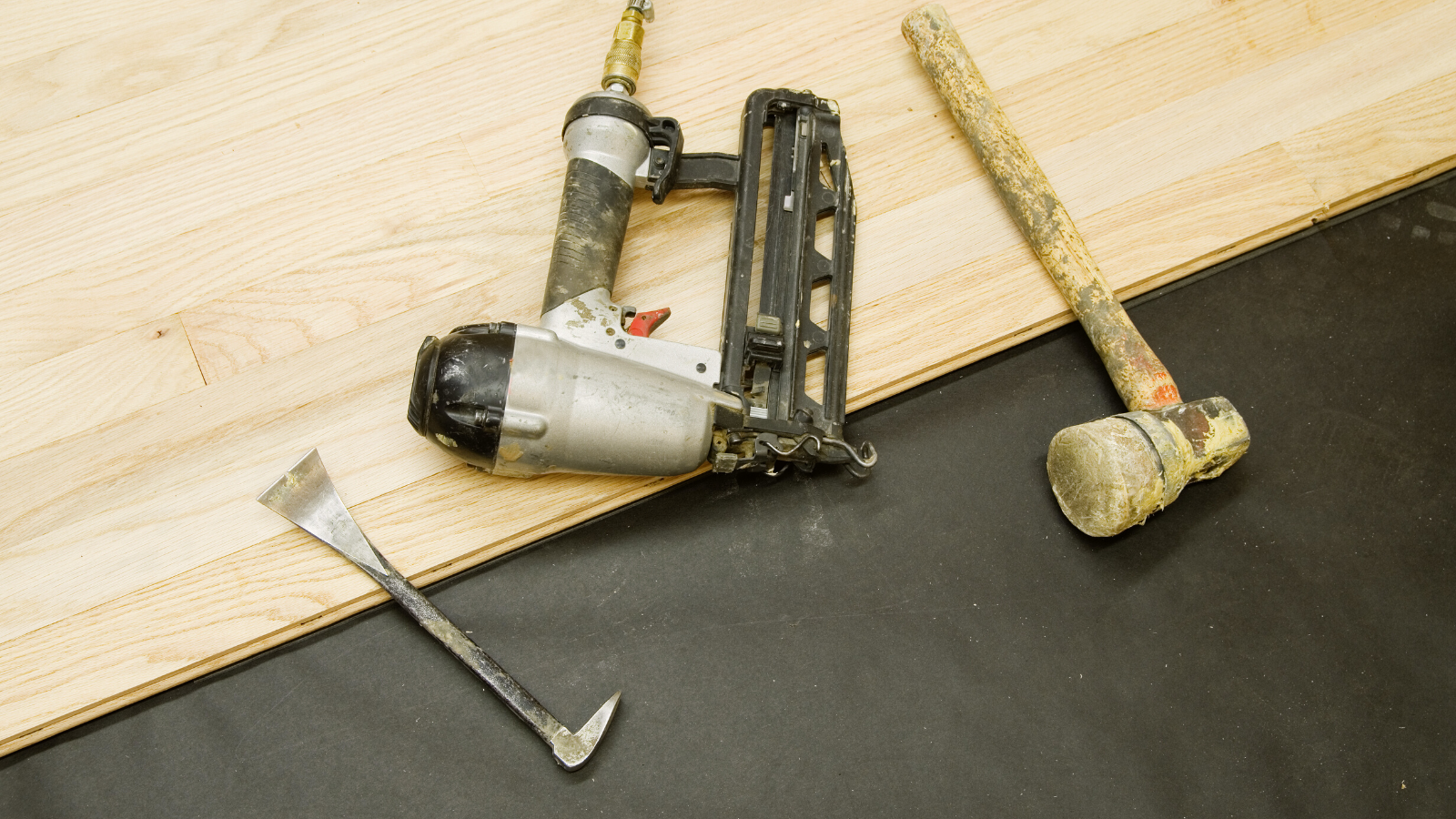Common Flooring Terms You Need to Know
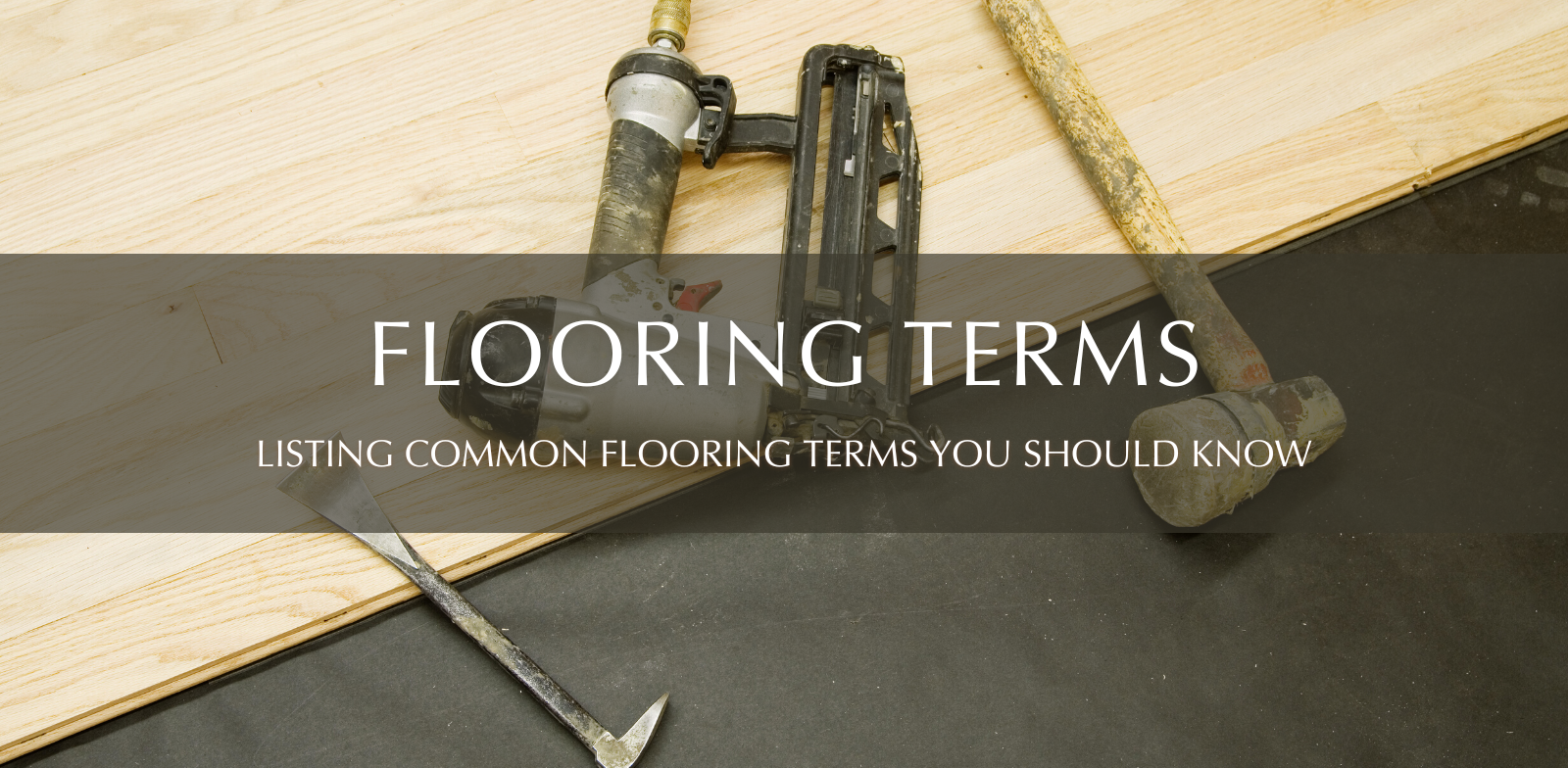
When choosing new floors, you’ll likely encounter flooring-related terms that you don’t recognize. While you may want to skip over them, you probably shouldn’t. It’s important to be familiar with some of the most common flooring terms so that you can simplify your floor-finding process and make an informed decision.
To help you get started, we’ve put together a list of common flooring terms and their definitions.
We will also be covering:
- Why knowing flooring lingo matters
- Common flooring terms and their definitions
- Tips to help you find the right flooring fit
Why It Matters
Before we dive in, let’s quickly cover why it is important to know these common flooring terms:
- They are necessary for decision-making
- They simplify your selection process
- They explain your floor’s care, materials, and installation process
In fact, much of this lingo is necessary for deciding which floor is the right fit for you. These terms may describe a floor’s materials, installation, or maintenance. And by understanding them, you will be able to rule out or count in floors you otherwise would not have.
Common Flooring Terms Homeowners Need to Know
These are the most common flooring terms you need to know so that you can make the best flooring decision for you and your home.
They are divided into three sections – 1. Hardwood, 2. Vinyl/Laminate, and 3. General Flooring Terms.
Common Hardwood Flooring Terms
Grades: The different qualities of hardwood floors, ranging from character to clean.
Finish: The finish is the top layer of the flooring, and it’s what you actually see and walk on. There are many different types of finishes, but the most popular are polyurethane and oil.
Polyurethane Finishes: Polyurethane is a clear, synthetic coating that can be applied to hardwood floors. It’s extremely durable and helps to protect the floors from scratches and dents.
Oil Finishes: Oil is a natural product that is applied to hardwood floors. It helps to protect the floors from damage and provides a slightly matte appearance. It also creates a “raw” floor appearance that can be more forgiving to scratches and foot traffic.
Hardness: Hardness is a measure of how difficult it is to scratch or dent a floor. The harder the floor, the more resistant it will be to scratches and dents.
Janka Rating: The Janka Rating is a measure of the hardness of a species of wood. The higher the Janka Rating, the harder the wood. You can read more about Janka Ratings here
Expansion Gap: An expansion gap is a gap that is left around the perimeter of the room when installing hardwood floors. This gap allows the flooring to expand and contract with changes in humidity. However, there isn’t a universally sized gap, so your installer will need to check your floor’s installation instructions prior to installing your new floor.
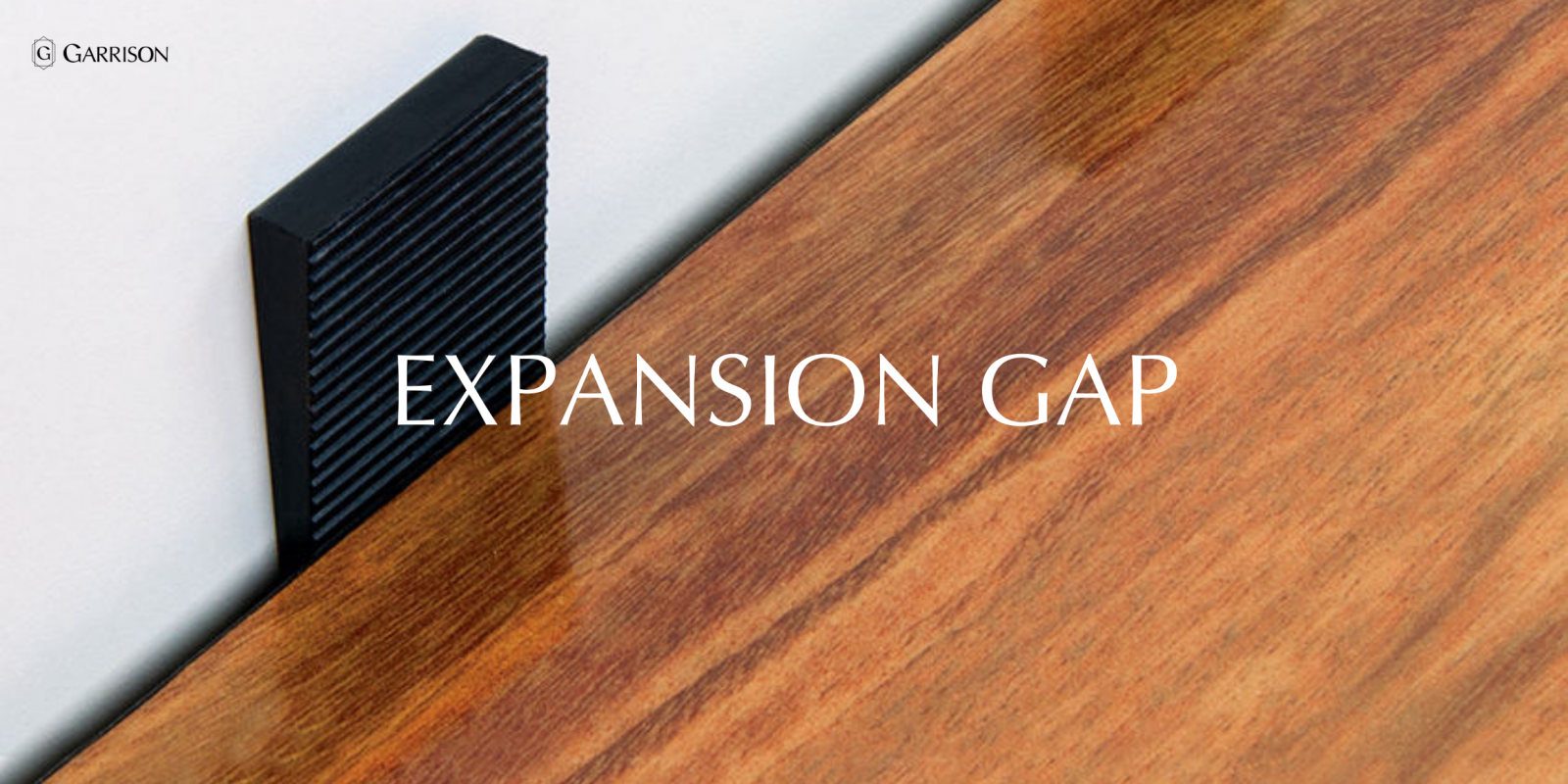
Common Vinyl and Laminate Flooring Terms
Laminate Flooring: A type of flooring made by bonding layers of composite wood and other materials together.
Vinyl Flooring: A type of flooring created by bonding stone or plasticine-type components together. There are three main types – WPC (Wood Plastic Composite), SPC (Stone Plastic (or Polymer) Composite), and Glue-Down Vinyl. Click here to read more about WPC vs SPC.
Registered Embossing: Registered embossing is a texturing process. It gives vinyl and laminate flooring the texture of knots and graining akin to hardwood.
Floating Floor: An installation method in which the flooring is not attached to the subfloor, but instead “floats” on top of it.
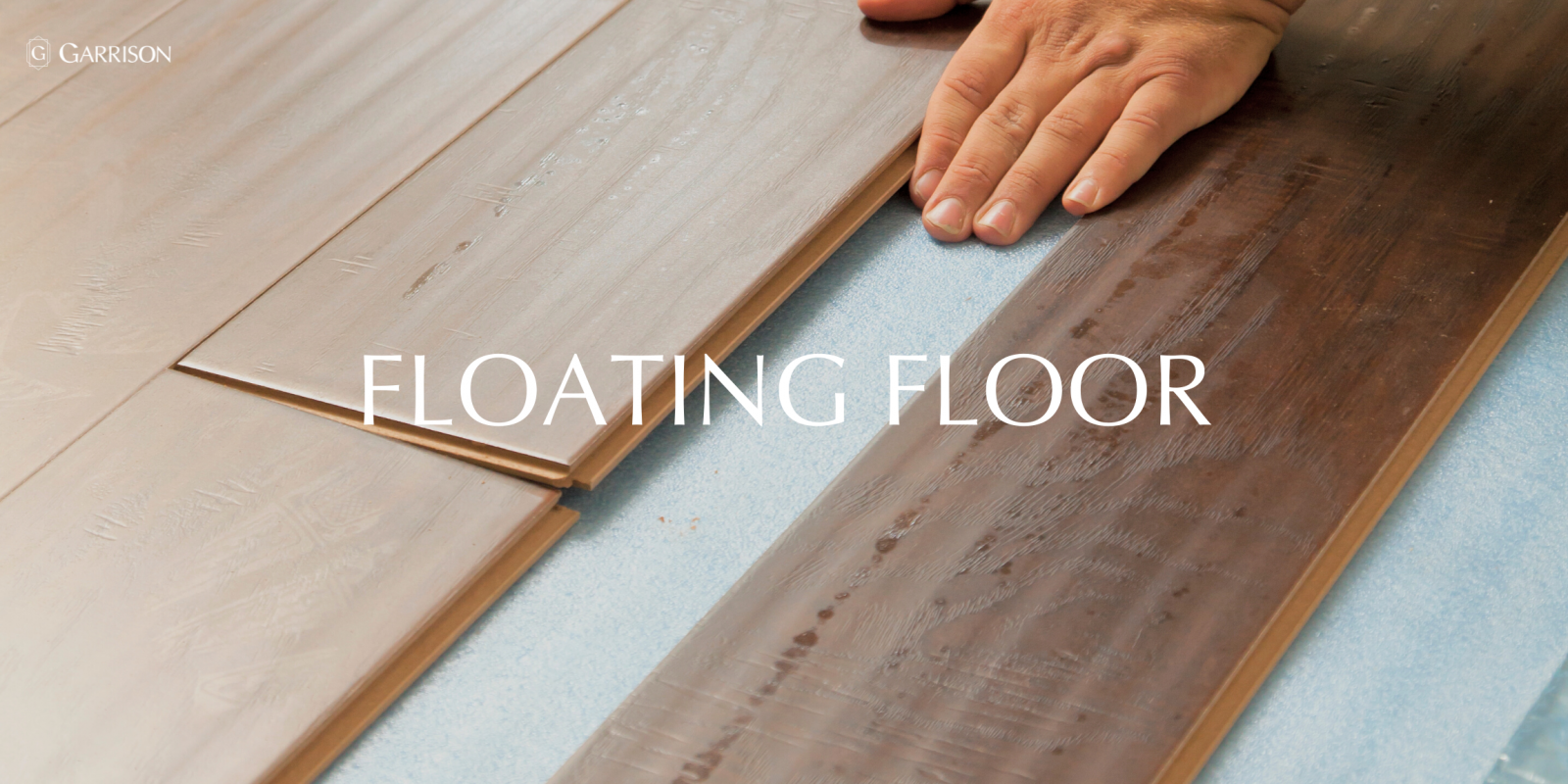
Glue-Down Floor: An installation method in which the flooring is glued directly to the subfloor.
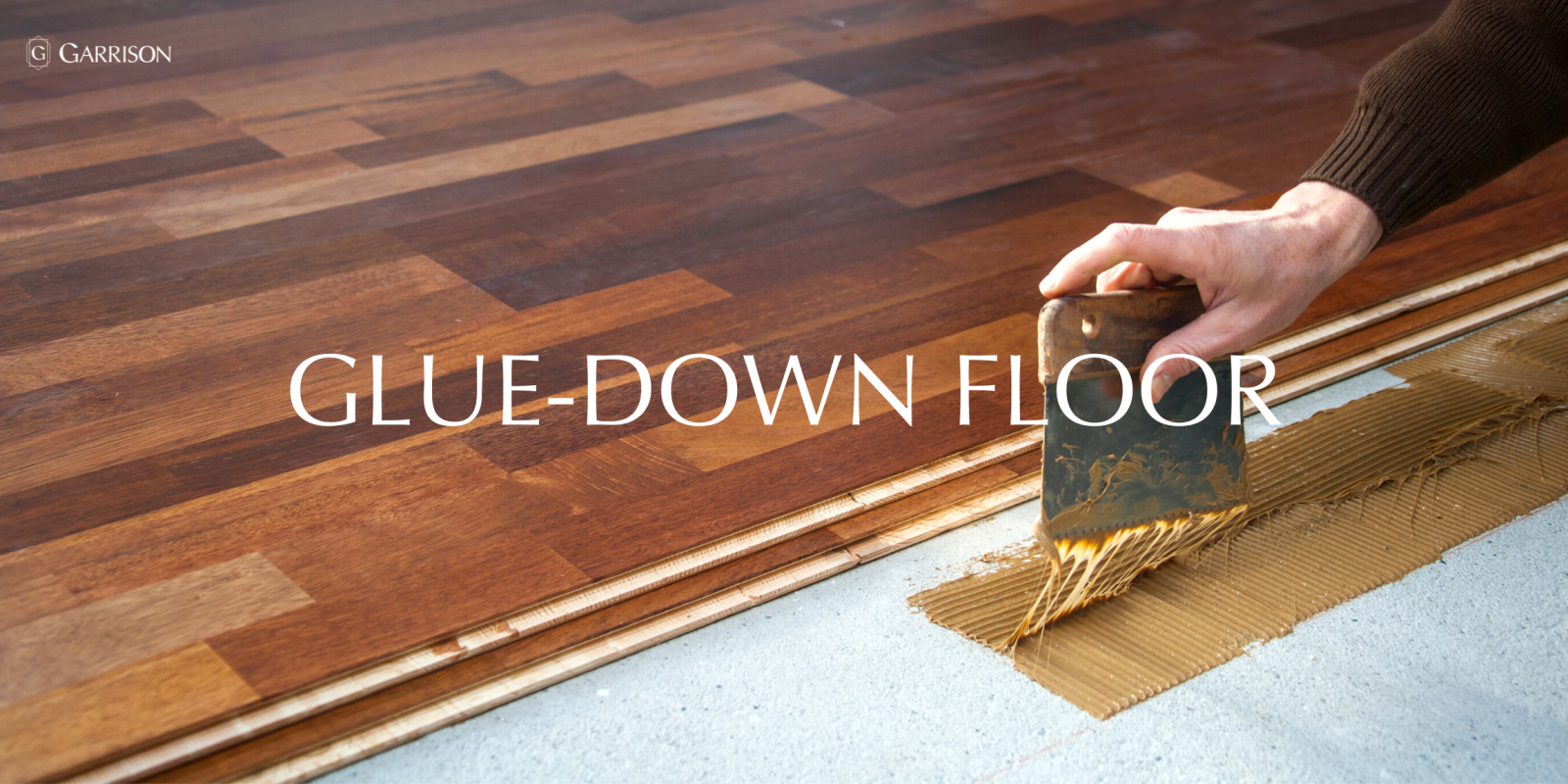
Common General Flooring Terms
Subfloor: This is the layer that is underneath any visible flooring. It provides support, soundproofing, and stability to the floors above it.
Underlayment: This is a material that is placed under the flooring, over the subfloor, to provide cushioning, moisture barrier, support, and/or sound barrier. It is often made of foam, felt, plastic, or cork.
Tongue and Groove: A method of fitting two planks of flooring together, in which one piece has a protruding tongue that fits into a groove on the other piece.
Edge Type: The edge type refers to the way the edges of the hardwood planks are finished. The most common edge types are square, beveled, and micro-beveled.
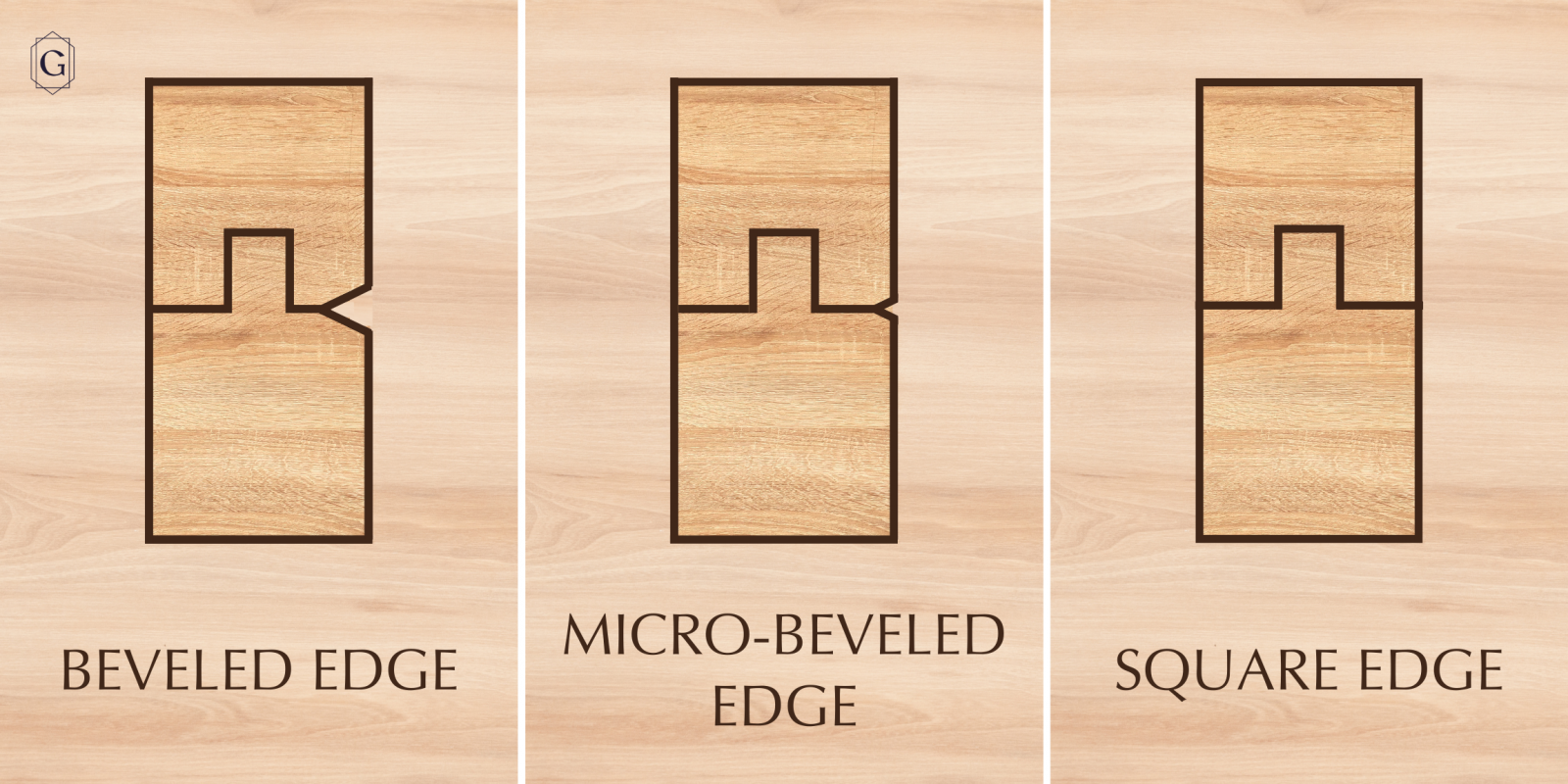
Square Edge: A square edge is when the edges of the floor’s planks are cut at a 90-degree angle.
Beveled Edge: A beveled edge is when the edges of the floor’s planks are cut at an angle. This angle can range from 45 degrees to 15 degrees.
Micro-Beveled Edge: A micro-beveled edge is when the edges of the floor’s planks are very slightly beveled. This gives the floor a smoother appearance.
T-Molding: A T-molding is a type of transition strip that is used to transition between two floors of the same height
Reducer and Threshold: A reducer and threshold are types of transition strips that are used to transition between two floors of different heights. Both are available in a variety of heights to accommodate different types of flooring.
Stair Nose: A stair nose is a type of transition strip that is used to transition between a hardwood floor and a stairway. Stair noses are available in a variety of heights to accommodate different types of flooring.
Baseboard: Baseboards are pieces of trim that are installed around the perimeter of a room where the floor meets the wall. Baseboards help to protect the wall from damage and cover the expansion gap.
These are just a few of the many terms you might hear when shopping for flooring. There are many more, but we selected the ones that are most commonly used.
Finishing Up
When researching new flooring options for your home, you might have come across terms that you aren’t familiar with. Flooring terms can be confusing, but understanding their meaning is crucial to finding the right floor.
Plus, you will be able to simplify your selection process, make an informed flooring decision, and easily communicate with your contractors.
So, do your research, ask plenty of questions, and consult with flooring professionals. By doing all of this, you can be sure that you’re making the best decision for you and your home’s needs.
If you have any questions, our flooring specialists are here to help. Click here to contact us.
